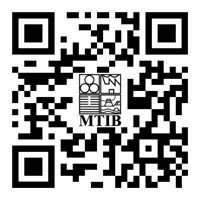ASEAN Free Trade Area (AFTA)
Background
The creation of the ASEAN Free Trade Area (AFTA) was agreed at the 1992 ASEAN Summit in Singapore. The main objectives of the AFTA are to:
- create a single market and an international production base;
- attract foreign direct investments; and
- expand intra-ASEAN trade and investments.
The liberalisation of trade in the region through elimination of both intra-regional tariffs and non-tariff barriers had contributed towards making ASEAN's manufacturing sectors more efficient and competitive in the global market. As a result, consumers are able to source goods from the more efficient producers in ASEAN, thus creating a robust intra-ASEAN trade.
Effective 1 January 2010, Malaysia with five other ASEAN Member States (which are Brunei Darussalam, Indonesia, the Philippines, Singapore and Thailand) is a complete free trade area. These countries have eliminated import duties on 99 per cent of products in the Inclusion List and AFTA is almost completely realised among the ASEAN-6.
On average, today ASEAN 6 has 99.20% of tariff lines in the Inclusion List at 0%. Only 0.35% or less than 1% of the Tariff Lines in the Inclusion list has import duties.For Cambodia, Laos, Myanmar and Viet Nam, collectively referred to as CLMV, 90.85% of the Tariff Lines in the Inclusion List are already at 0%.On the average, ASEAN member states have 95.99% Tariff Lines at 0% according to the ATIGA Tariff Schedule of 2015.
Malaysia has eliminated duties on 98.74% of its tariff lines in our ATIGA Tariff Schedules for 2015. We now only have 73 tariff lines or less than 1% (0.59%) that have duties of 5% to 20% covering tropical fruits and tobacco and highly sensitive products (rice), respectively. Malaysia has placed 82 Tariff Lines (TLs) which comprise of alcoholic beverages and arms weapons in the General Exclusion List. These products are not subject to import duties reduction or elimination.Based on the commitments under AFTA, Cambodia, Lao PDR, Myanmar and Viet Nam eliminated duties on all products in 2015 with flexibility of 7% of tariff lines up to 2018.
With the reduction and elimination of the import duties, producers/manufacturers can afford to buy raw materials at a cheaper price and better quality from ASEAN countries. This would lead to the reduction in costs of production due to the elimination and reduction in tariff. As a result, prices of products will be cheaper and can compete not only within ASEAN Member States but within other countries as well. With larger scale of production and 625 million ASEAN populations, it provides broader market access to producers/ manufacturers.In 2011, intra - ASEAN trade had market access of USD 598.2 billion, USD 600.9 billion in 2012 and USD 608.6 billion in 2013. ASEAN is the main market for Malaysia with around 25 - 27% was made in trade in goods.
Due to the reduction in import duties, there is an increase in Foreign Direct Investment (FDI) which has a positive impact on producers/manufacturers and consumers. In 2013, total Intra-ASEAN FDI was USD21.3 billion compared to USD20.6 billion in 2012.
 Bahasa Melayu
Bahasa Melayu 

 English
English